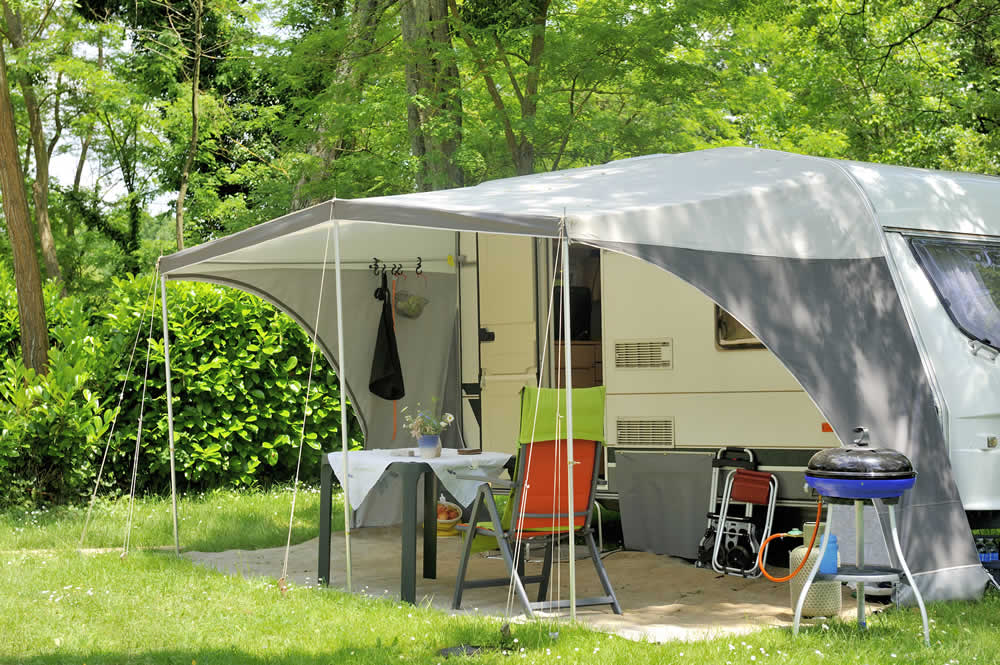
Thanks to successive rounds of lockdown during the coronavirus pandemic and the foreign travel restrictions that followed, the caravan industry in the UK has benefitted from unprecedented levels of demand.
Hot on the heels of the recovery from the pandemic, the British economy has now been hit by inflation and a serious challenge to the cost of living. This continues to fuel the popularity of the staycation. Coupled with the freedom and affordability of holidays in a caravan this has produced a welcome boost for this sector of the leisure industry.
Demand
In a posting on the 28th of April 2022, Farmers Weekly magazine referenced figures showing that campsite bookings for touring caravans, motorhomes, and tents had risen by a further 40% this year compared with last year, which had itself seen a whopping 96% increase on bookings taken in 2020.
In a preview of the Holiday Park and Resort Innovation exhibition at Birmingham’s NEC from the 2nd to the 3rd of November, still further encouraging statistics on the state of the UK’s caravan industry were released:
- an estimated 755,000 touring caravans and motorhomes are regularly in use in the UK;
- that total is forecast to increase to 889,466 such recreational vehicles by 2030 – an increase of some 18% in just the next seven years;
- underlining the popularity of the staycation, the research revealed that 75% of those keen to tour with their caravan wanted to do so within the UK;
- the expenditure on touring holidays in the UK has already peaked at £2.6 billion but is predicted to rise still further to £3.6 billion within the next seven years;
- the number of trips made by touring caravans and motorhomes stood at just 15.59 million five years ago but is forecast to grow by some 6% – or one million extra trips – to a total of 16.56 million by 2030.
Given this surge in the popularity of staycations centred on a caravan or motorhome of one type or another, it is hardly surprising that sales of these leisure vehicles have also shot up. According to a posting on the Van Life Matters website on the 31st of May 2022, new buyers tend to be younger and include those for whom a caravan offers the chance to work while in the move away from home. Thanks to such interest in new and preloved leisure vehicles:
- sales of touring caravans have increased by 23.5% compared with the previous years – to a total of 17,639 trailers sold during the year;
- motorhomes and sales of campervans and motorhomes have increased by 12% – to reach a total of 14,074 vehicles sold; and
- an increase of 38% to a total of 19,624 holiday homes or static caravans sold during 2021.
Supply
Although soaring demand has fuelled an increase in the supply of caravans and motorhomes for sale, at least one commentator – writing in the Caravan Times on the 20th of December 2021 – believed that the figures could have been even more impressive but for some of the problems facing manufacturers of such leisure vehicles.
Manufacturers of caravans, motorhomes, and campervans – just like manufacturers in practically every other sector – are beset by supply chain problems which add significant delays and costs for the acquisition of essential materials, supplies, and components.
In a prevailing economic climate where the value of the pound sterling is sinking fast against many other currencies, the cost of imported materials and components has also risen – so, adding to manufacturers’ costs.
Manufacturing – and other sectors of the economy are also facing labour shortages. An article by People Management on the 15th of August 2022 attributes the shortages to a combination of factors such as the disruption caused by the pandemic, a shortage of labour globally, increases in early retirement, and the repercussions of Brexit.
Summary
There is little doubt that the burgeoning demand for caravans spells a rosy future for the industry both now and well into 2023. Whether the most can be made of these positive forces, however, also depends on the capacity for supply to keep up with demand.

